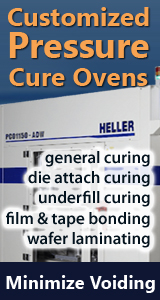Printed Circuit Board Assembly & PCB Design Forum
SMT electronics assembly manufacturing forum.
- SMTnet
- »
- Electronics Forum
- »
- Questions you would ask if someone said they had a 3D printer for professional multi-layer PCBs?
Questions you would ask if someone said they had a 3D printer for professional multi-layer PCBs?
Views: 7119
![]() We're developing a 3D printer for professional multi-layer P...
- Feb 25, 2015
by
Nano Dimension
We're developing a 3D printer for professional multi-layer P...
- Feb 25, 2015
by
Nano Dimension
![]()
![]()
![]() > We're developing a 3D printer for professional
> m...
- Feb 26, 2015
by
fantasy728
> We're developing a 3D printer for professional
> m...
- Feb 26, 2015
by
fantasy728
![]()
![]()
![]() To get real conductivity in your traces you will need to rem...
- Feb 26, 2015
by
sarason
To get real conductivity in your traces you will need to rem...
- Feb 26, 2015
by
sarason
![]()
![]()
![]() When I and some friends worked on this project we were aimi...
- Feb 27, 2015
by
sarason
When I and some friends worked on this project we were aimi...
- Feb 27, 2015
by
sarason
![]()
![]()
![]() Thanks Sarason,
You are right that chemists and physicists ...
- Mar 01, 2015
by
Nano Dimension
Thanks Sarason,
You are right that chemists and physicists ...
- Mar 01, 2015
by
Nano Dimension
![]()
- SMTnet
- »
- Electronics Forum
- »
- Questions you would ask if someone said they had a 3D printer for professional multi-layer PCBs?






